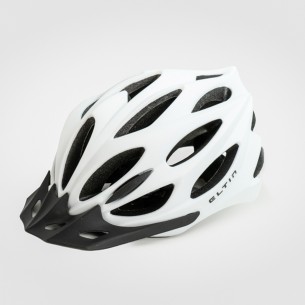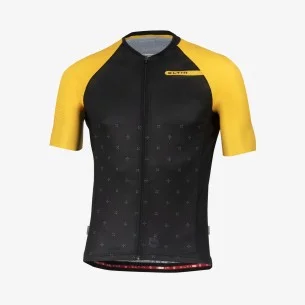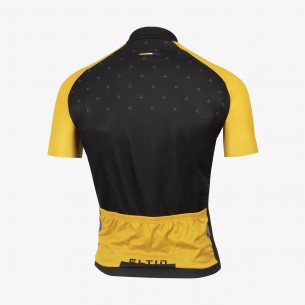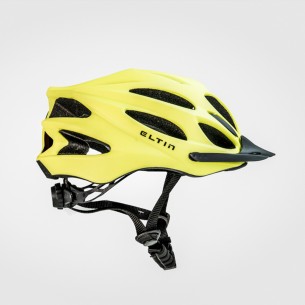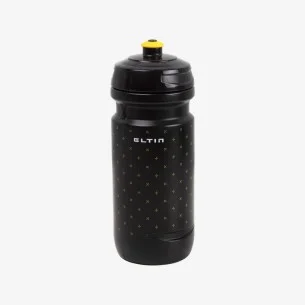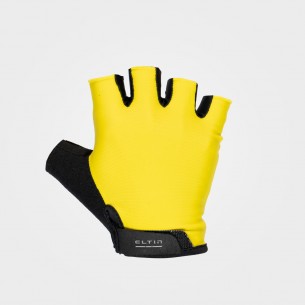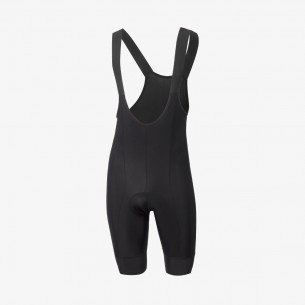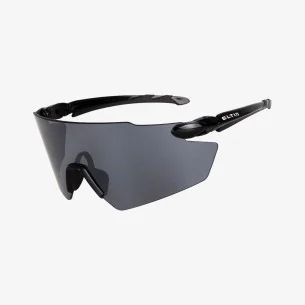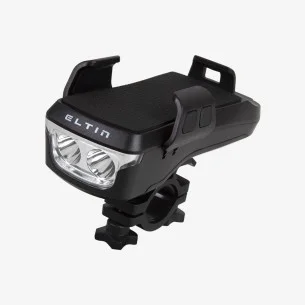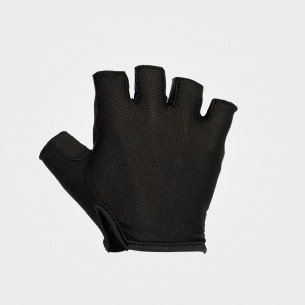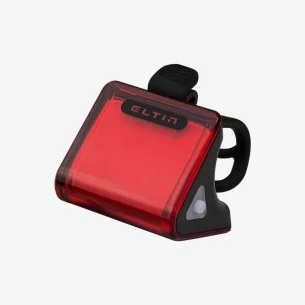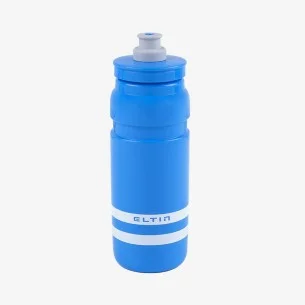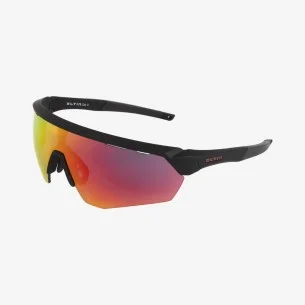Do you enjoy traveling? Discovering new landscapes and destinations? Why not combine it with the pleasure of cycling? Tourism and sport come together in 4 routes that offer a truly unforgettable experience.
Get ready to pedal and discover new horizons this summer! Bike touring offers the perfect combination of outdoor adventure, exercise, and travel. Europe is home to many incredible bike-friendly destinations, ideal for intermediate and advanced amateur cyclists looking for challenging routes and unforgettable landscapes.
In this article, we explore four top destinations in Europe with multi-day itineraries, places to visit at each stage, reference maps, and Eltin product recommendations to get you properly equipped.
1. The Way of St. James (Camino de Santiago) (French Route by Bike)
The French Way of St. James is the quintessential bike pilgrimage route in Spain. It starts in the French Pyrenees and crosses the north of the peninsula all the way to Santiago de Compostela. It covers nearly 800 km filled with history and diverse landscapes, from the mountains of Navarra to the vineyards of La Rioja and the green valleys of Galicia. It's no surprise that this is the most popular route among pilgrims on foot and by bike.
 (1) (2).jpg)
If you don’t have that much time, an ideal option is to ride the last 300 km from León to Santiago, which is enough to receive the Compostela.
Below, we suggest a 5–7 day itinerary starting from León to Santiago.
Suggested itinerary: León – Santiago (5–7 days)
- León – Astorga (49 km)
Start your route in historic León, visiting its magnificent Gothic cathedral. On the way to Astorga, you'll cycle across the Castilian plateau. Once in Astorga, don’t miss the Episcopal Palace designed by Gaudí and the Cathedral of Santa María. It’s a small city rich in Roman heritage and chocolate-making tradition. - Astorga – Ponferrada (54 km)
After leaving Astorga, the terrain rises toward the Montes de León. You'll climb the legendary Alto de Foncebadón and the Cruz de Ferro, where it’s traditional to leave a stone as an offering. This is one of the highest points of the route. - Ponferrada – O Cebreiro (74 km)
Cycling through the vineyards and villages of El Bierzo, you approach Galicia. The major challenge of the day is the climb to O Cebreiro (1,300 m), a tough mountain pass marking your entrance into Galicia. In O Cebreiro, you'll find a stone village with pre-Roman “pallozas” and an ancient church where the legend of the Galician Holy Grail was born. - Triacastela – Portomarín – Palas de Rei (67 km)
This stage crosses the rural heart of Galicia. A recommended detour is to visit the Monastery of Samos before continuing to Sarria, a town where many pilgrims join the route. - Palas de Rei – Santiago de Compostela (66 km)
On this final stage, enjoy the Galician landscape of meadows and eucalyptus trees. Ride through Arzúa, known for its Arzúa-Ulloa cheese, and pass through small villages with traditional granaries. As you near the finish, climb the last ascent at Monte do Gozo, where you'll catch your first glimpse of Santiago Cathedral’s towers. Feel the thrill of the final descent into the city of Santiago de Compostela, where your journey ends before the majestic Cathedral in Obradoiro Square.
2. Dolomites (Italy): the Sella Ronda and the Three Peaks of Lavaredo
The Dolomites are located in northern Italy and form a mountain range offering spectacular landscapes and iconic routes, such as the Sella Ronda loop and the climb to the Three Peaks of Lavaredo.
Sella Ronda is a circuit that connects four iconic mountain passes in a 60 km loop. Also noteworthy are legendary climbs from the Giro d’Italia, such as the Three Peaks of Lavaredo (Tre Cime) or the Passo Giau.

Suggested itinerary: Dolomites Circuit (4–5 days)
- Day 1: Passo Giau and arrival in Cortina d’Ampezzo (70 km)
Start the route in the town of Arabba. A great first challenge is the climb to Passo Giau (2,236 m), considered one of the most beautiful mountain passes in the Dolomites for its meadows and views of the Marmolada massif. After its steep slopes, descend toward Cortina d’Ampezzo. This famous alpine town offers a beautiful historic center surrounded by peaks like Cristallo and Tofane. Take time to stroll through Cortina, refuel with a plate of fresh pasta, and get ready for the next day. - Day 2: Climb to Tre Cime di Lavaredo (50 km)
From Cortina, head to Lake Misurina and take on the tough ascent to Rifugio Auronzo next to the Tre Cime di Lavaredo. It's only 7 km from the lake to the top, but gradients reach up to 15% in the final stretches. This extra effort is worth it: at the summit you can admire the stunning Three Peaks, an icon of the Dolomites, and the remains of WWI trenches in the mountains. After enjoying the views, descend carefully back to Misurina and continue pedaling toward Cortina for your next stage. - Day 3: Sellaronda Circuit (55–60 km)
The Sellaronda is the signature cycling route of the Dolomites, a loop that encircles the Sella massif by crossing four connected mountain passes. Start in Canazei (Val di Fassa) and follow the classic counter-clockwise direction: first climb Passo Pordoi (2,239 m), with 27 numbered switchbacks from the Canazei side. At the top, you’ll find a monument to Fausto Coppi and panoramic views of the Marmolada group (with its glacier). Descend to Arabba and immediately begin the climb to Passo Campolongo, the gentlest of the four. Without pause, cross Corvara and tackle Passo Gardena, with beautiful views of Sassolungo in the distance. Descend into the Selva di Val Gardena valley (but not before stopping at the Dantercepies Viewpoint) and take on the final challenge: Passo Sella, looping around the Sella Towers and offering perhaps the best panoramas of the entire circuit. After reaching the top, a fast descent brings you back to your starting point. The Sellaronda is about 60 km long with approximately 1,700 m of total elevation gain, featuring consistent gradients of 8–10%, making it a moderately difficult route and a favorite among cyclists from around the world.
3. The Loire Valley (France)
Discover the castles of the Loire Valley, a French gem you can't miss. Also known as the "Garden of France", it is a UNESCO World Heritage Site thanks to its incredible landscapes and charming villages. This is a very long valley with gentle terrain and plenty of bike lanes, where you can admire spectacular castles and iconic cities. A route that includes all the ingredients for a perfect cycling experience.
The total distance is approximately 350 km and, depending on your pace, it can be completed in 4–5 days.

Suggested itinerary: Orléans – Angers (5 days – 350 km)
Day 1: Orléans – Blois (60 km):
Start in the historic city of Orléans, famous for its cathedral and for being the city of Joan of Arc. Following the Loire River, you'll ride through river landscapes and small villages until you reach Blois, a city with a Renaissance castle that combines Gothic, Renaissance, and Classical styles. Don’t miss the nighttime light show at the castle.Day 2: Blois – Amboise (45 km):
From Blois, continue cycling toward Amboise, another destination full of history. Here you'll find the Royal Château of Amboise, a former residence of French kings, and the Clos Lucé, Leonardo da Vinci’s last home, where you can see models of his inventions. It’s a peaceful yet culturally rich stage.Day 3: Amboise – Tours (40 km):
This day is perfect for enjoying the natural landscapes of the Loire. Pass by the impressive Château de Chenonceau, famous for its architecture spanning the Cher River. Continue to Tours, a lively city with a charming historic center. Visit Place Plumereau and enjoy the vibrant evening atmosphere.Day 4: Tours – Saumur (80 km):
The longest stage takes you through vineyards and bucolic scenery. Don’t miss the Abbey of Fontevraud, a monumental complex housing the tombs of Richard the Lionheart and Eleanor of Aquitaine. Finish in Saumur, known for its riverside castle and equestrian tradition.Day 5: Saumur – Angers (60 km):
The final stretch leads you to Angers, famous for its medieval castle which houses the Apocalypse Tapestry, the largest in the world. Enjoy a stroll through its gardens and explore its old town.
4. The Via Claudia Augusta (Germany – Austria – Italy)
The Via Claudia Augusta is an ancient Roman road that connects southern Germany with northern Italy, crossing the Alps. It’s a route that blends history, culture, and stunning landscapes—from the Bavarian plains to the majestic Alps and the Italian vineyards.
Perfect for those seeking a varied and scenic bike touring adventure. It starts in Germany (Augsburg), passes through Austria (Tyrol), and ends in Italy (Venice or Lake Garda). The total distance is around 600 km and can be completed in 6–7 days.

Suggested itinerary: Augsburg – Trento (600 km)
- Day 1: Augsburg (Germany) – Füssen (70 km)
Start in the historic city of Augsburg and ride across the green Bavarian plains until you reach Füssen, home to the iconic Neuschwanstein Castle, a true fairytale landmark. - Day 2: Füssen – Landeck (Austria) (80 km)
Cross the border into Austria, enjoying alpine landscapes. You'll ride through the impressive Lech Valley until you reach Landeck, a town surrounded by mountains. - Day 3: Landeck – Resia (Italy) (70 km)
Tackle the most challenging section: the Resia Pass (Reschenpass), which marks the entry into Italy. At the summit, enjoy the view of Lake Resia and its famous submerged bell tower. - Day 4: Resia – Merano (60 km)
Descend through the Vinschgau Valley, a region known for its apples and medieval castles. Arrive in Merano, a charming spa town nestled in the mountains. - Day 5: Merano – Trento (70 km)
Follow the course of the Adige River, cycling along one of the most scenic bike routes in Italy. Trento offers a beautiful old town and a vibrant cultural scene. - Day 6: Trento – Lake Garda or Venice (90–130 km)
Depending on your preference, you can head to Lake Garda, the largest lake in Italy, or continue on to romantic Venice, ending your journey among its iconic canals.
Recommended Gear for Your Bikepacking Routes
To take on this kind of multi-day cycling routes, you'll need a helmet that’s comfortable and well-ventilated for long days, LED lights front and rear (useful if you start early, in low light, or go through tunnels or dense forest), and one or two bottles to stay hydrated in remote sections. A key point, especially in summer, when high temperatures work against us. It’s advisable to drink regularly even if you’re not thirsty, to avoid dehydration.
Since many stages combine tarmac and trails, it’s also important to carry basic tools in case something on the bike needs adjustment. A great option to keep everything in one place is a multitool from the Eltin Workshop Series.
A bell is also recommended to alert walkers on the paths or trails you pass. With the right gear from Eltin, you'll be able to enjoy all these routes in safety.
A pair of glasses to protect you from the sun and insects on fast descents is another must-have item on your route.
Finally, when it comes to clothing, consider wearing a lightweight summer Eltin jersey as well as a comfortable pair of bib shorts that allows you to ride for long hours in the saddle. Likewise, a pair of short gloves, light but padded, will certainly add comfort to every day on the bike.
And finally, don’t forget the sunscreen — the views are beautiful, but the sun is relentless. With the right kit and accessories, your rides will be 100% fun in the sun.
Helmets
Water Bottles
Eltin cycling bottle 600ml black and yellow
Gloves
Eltin Lapster Gloves Yellow
Cycling Shorts
Immortal Black Bibshorts
Glasses
Speed Snake Glasses Black
Cycling Shorts
